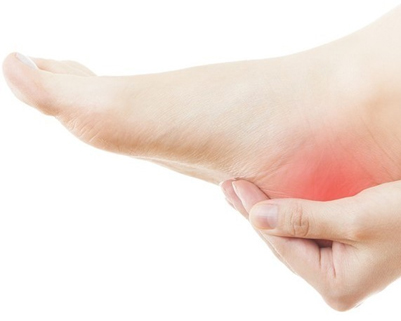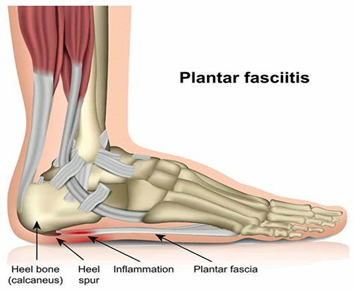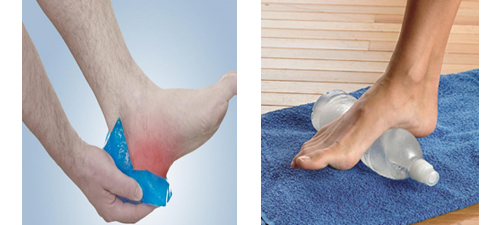Plantar fasciitis is an inflammation of the fibrous tissue. It is the most common cause of heel pain. The plantar fascia is a thick, weblike ligament that connects heel to the front of foot. It acts as a shock absorber and supports the arch of foot, helping you walk.
Plantar fasciitis pain may increases during the first step after waking up or a prolonged rest.

It is estimated that 1 in 10 people will develop heel pain during their lifetime. Females are more prone to develop plantar fasciitis as compare to men.
COMPLICATIONS IF LEFT UNTREATED
Ignoring plantar fasciitis may result in chronic heel pain that hinders your regular activities. Changing the way you walk as a way to relieve plantar fasciitis pain might lead to foot, knee, hip or back problem.
CAUSES
- Overweight or obese is the most common cause of plantar fasciitis.
- Over-use: too much physical activity like running, walking and standing for a long time particularly if there is a rapid increase in activity over a short period of time.
- Walking barefoot on hard surfaces.
- Tight Achilles tendon may also result in plantar fascia pain.

RISK FACTORS
- Occupations that keep you on your feet. Factory workers, teachers and others who spend most of their work hours walking or standing on hard surfaces can damage the plantar fascia.
- Age. Plantar fasciitis is most common between the ages of 40 and 60.
- Obesity. Excess pounds put extra stress on your plantar fascia.
- Foot mechanics. Flat feet, a high arch or even an abnormal pattern of walking can affect the way weight is distributed when you're standing and can put added stress on the plantar fascia.
SIGNS AND SYMPTOMS
- Pain and stiffness in the morning that gets worse as the day progresses.
- The pain is typically sharp and usually unilateral. Heel pain is worsened by bearing weight on the heel after long period of rest.
PREVENTIVE MEASURES
DO’S
- Stretching of posterior column.(example- calf, hamstring and gluteus muscle)
- Icing four times in a day.
- Rest .
- Wear cushion shoes.
DON’TS
- Avoid running and jumping activities.
- Avoid barefoot walking.
- Don’t push through the pain
- Don’t assume that you will never get back to exercise again.
PHYSIOTHERAPY MANAGEMENT OF PLANTAR FASCIITIS
- ULTRASONIC THERAPY:
It helps to reduce the inflammation in the heel area, that helps in reduction of pain and swelling.
- IONTOPHORESIS:
It is also helpful to reduce inflammation by applying anti-inflammatory ions topically to the foot and transmitting these ions through the skin with an electric current.
- ICE THERAPY
ICE MASSAGE:
Ice bottle massage provides a gentle stretch to plantar fascia, this helps to reduce the tension of plantar fascia and improve mobility.
ICE PACKS:
Ice packs can be applied to the bottom of foot to control the inflammation, thrice daily for 15-20 minutes.

- STRETCHING EXERCISE - CALF STRETCHING, HAMSTRING STRETCHING, GLUTEUS STRETCHING




